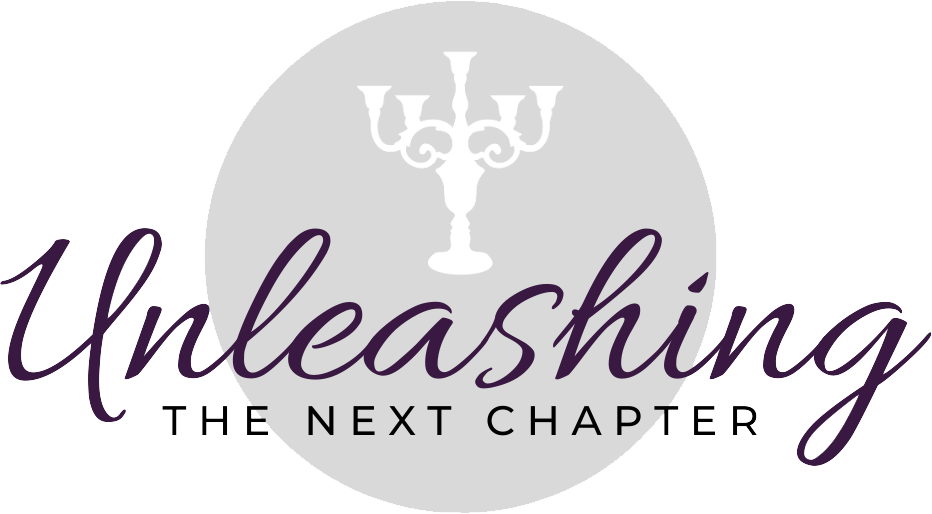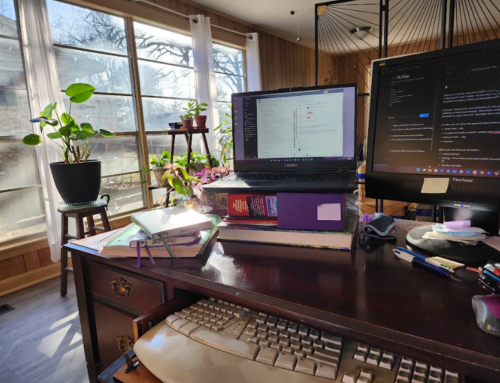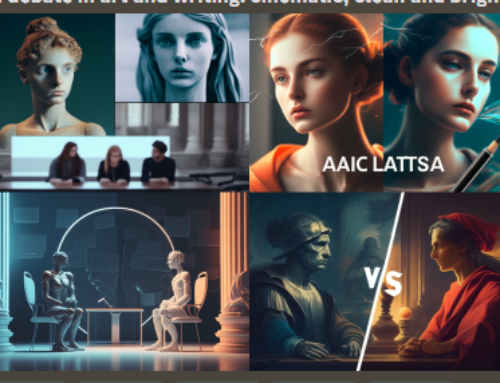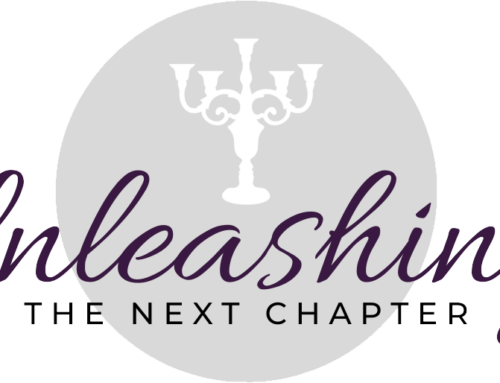Most things in life are both good and bad. Cliché but true, there are two sides to every coin.
Here’s the one that makes me the craziest:
“But you look normal. “
So, two things:
1. I’m not. I have survived strokes. Strokes, with an “s,” plural, at least five that we know of. The normal ship sailed off without me in 2006. Most days I’m glad stroke and the residual neuropatic pain and other complications are considered an invisible illness. I work really hard to look normal. I use a service dog to compensate for balance issues, as well as to alert me to the surprise attacks of vertigo and migraine that are now a regular occurrence. When I stumble or fall or become discombobulated, most people are focused on him rather than me. All my senses are heightened or changed since stroke. Sounds, touch, temperature, lights, motion, and even taste are all different. I often struggle with sensory-overload when I leave the safety of my apartment. Going to big-box stores, crowded events, even church on Sunday, can set me up for sensory-overload which then causes a system-wide shut down. Then a family member, friend, or my ever-present service dog has to take over. But at least I look normal. 
2. Tell me again what “normal” looks like? In the US alone, 18% of adults live with disability; that’s more than 50 million people. According to the Americans with Disabilities Act (ADA), a person with a disability has a condition that substantially limits a major life activity such as walking, caring for oneself, seeing, hearing, thinking, etc. Some disabilities may not be visible; for example, deafness, epilepsy, autism, cognitive, or psychological disorders. That includes me. Thanks to stroke, the leading cause of serious long-term disability and the fifth leading cause of death for Americans, I can no longer drive and have been harassed for using a handicap placard; my children don’t remember me being the fun-loving mom I once was and still dream of being; I had to give up my profession as a teacher and my dreams of being a university professor; my relationships with family and friends changed, many ended; doctor appointments and the related bills are now the most frequent items in my calendar and checkbook; and, as much as I love and appreciate my service dog and all he does for me, it is really hard having to obey a dog. But that’s OK because I look normal.

Graduation, pre-stroke
I get so tired of hearing I “look normal,” and yet some days I’m so grateful to hear those words. On the worst of days, you won’t see me out in public (so many missed holidays, family reunions, graduations, weddings, parades, parties…pictures and memories I’m not in), so it doesn’t matter how I look. But even on good days, things can change quickly while I’m out and about—normal to major mess in minutes. Most days I work really hard to look normal. That goes beyond the clothes and makeup. Due to lack of feeling, coordination, and control of my foot muscles, I search more than I care to admit to find shoes that won’t trip me up, fall off, or cause sores, and yet still look cute. I spend time writing out things and practicing what I want to say before I get into situations where my words might fail me. Family members and friends have learned my cues that I need to tap out from a situation, and they gracefully pick up the conversation or get me out of the room when sensory overload hits. I used to love being outdoors all year round, but now I’m overly sensitive to heat, and since we live in Texas, that limits my time and activities—what I wouldn’t give to go camping with my extended family, attend the Muskogee (Creek) Nation Festival in June, to watch my Rangers play at the Ballpark in Arlington (I don’t care who pays for sponsorship each year, it’s the Ballpark), to teach swimming lessons and coach swim team again, and to play with Gizmo at the dog park in the evening without another adult along to drive and make sure I’m OK while G plays. But, hey, at least I look normal.
Normal doesn’t describe my pain issues either. I’m one of the lucky 10% of stroke survivors who end up with what used to be called Thalmic Stroke Pain. It’s when the stroke hits the thalamus part of the brain where all your sensory impulses and nerves meet up. Not only did I stroke in that part of the brain twice, but one was a lacunar stroke. That means there is an actual hole, missing gray matter, empty space, nada, in a small portion of my thalamus. So not only do I get mixed signals from my nerves, especially on the right side of my body, often those signals are read in my brain as pain. It always feels like my right arm and leg are asleep with the annoying to painful pins and needles sensation. It usually feels like my right leg is on fire. Sometimes a friendly hug or loving caress feels like an electrical shock. It’s a crap shoot when I take a step if I feel anything (where is that damn floor, anyway?), or if it feels like I’ve stepped on a cattle prod. Sounds often seem too loud, and lovely high sopranos at church just about kill me. Drinking out of a metal can not only tastes strange, but can cause my teeth to hurt. Sounds crazy doesn’t it? I’ve been evaluated for crazy. I actually prayed for crazy because there are meds for that. Sorry, I’m not crazy. It’s the actual, literal, hole in my brain. At this point, the medical community has diagnosed this nasty residual effect of stroke as Central Pain Syndrome. Many fellow sufferers write #lettersfromhell because it usually feels like some or all of our body is being burned alive. But we look normal.
One way stroke survivors in my situation keep up the illusion of normal is through our medications. There is no cure for missing brain matter. There is no cure for stroke, prevention prior and rehab after yes, cure no. There is no cure for Central Pain Syndrome. Since the pain really is all in our heads, many of us have exhausted all the traditional and recommended medications for our symptoms. Most of those meds just don’t work for us. Or we build up a tolerance. Or the side effects are worse than the pain, if you can imagine (one med caused most of my hair to fall out, and caused me to act and feel drunk all the time). Or we are allergic to those drugs. Or the medication is contraindicated due to other diagnoses. Many of us are using narcotics to mask the symptoms and hide the pain.
We understand that the narcotics don’t cure anything, but they allow us to manage the incessant pain, and act normal. Thanks to the CDC issuing a politically motivated, poorly researched, and irresponsibly near-sighted guideline last year in an attempt to lessen drug overdose deaths— guidelines they have since reconsidered and rescinded—state governments and insurance companies have decided to restrict doctors from prescribing opioids to treat neuropathic pain. Lawmakers and bureaucrats, not medical professionals, are practicing medicine without a license. I, and many of my fellow survivors and sufferers, have successfully used various opiods for decades to dampen the pain sensations so we can have some semblance of normalcy.
We are not getting high. We are not abusing drugs. We are no more addicted to the narcotics than a diabetic is to insulin. We are not buying illegal drugs off street corners. We are working with pain management doctors who are highly trained, licensed, and monitored. We are compliant with regular drug testing and frequent doctor appointments. We are treated like parolees rather than major medical crisis survivors. Since many states have already adopted these CDC guidelines as laws, many Central Pain Syndrome sufferers have been refused their medication and been forced to detox cold turkey. A number of these sweet souls have committed suicide because living with the pain of feeling like you are being burned alive just isn’t living…no matter how normal you look.
At my last pain management appointment, my brilliant and compassionate doctor informed me that Texas is changing the rules also. She is no longer allowed to write narcotics for neuropathic pain. She ordered tests to see if there was any other way we could justify the medicine I have successfully and compliantly taken for nine years. I see her again in July, and will learn my fate then. Needless to say, I am frantically looking for other options to deal with the pain if my doctor comes up empty. Tell me again how normal I look.
May is Stroke Awareness Month. It was my intention to write a post on this topic annually, but 2014 was my last stroke post. I apologize if this post seems a bit snarky, but that’s exactly how I feel.
If you wish to learn more about stroke or Central Pain Syndrome, just the facts without the snark, here are some great resources:
- “Stroke Facts,” Centers for Disease Control, https://www.cdc.gov
- “Stroke Information Page,” National Institute of Neurological Disorders and Stroke, https://www.ninds.nih.gov
- “Stroke Facts,” National Stroke Association, www.stroke.org
- “Central Pain Syndrome,” National Organization for Rare Disorders, https://rarediseases.org/rare-diseases/central-pain-syndrome/
- “Central Pain Syndrome,” National Institute of Neurological Disorders and Stroke, https://www.ninds.nih.gov/Disorders/All-Disorders/Central-Pain-Syndrome-Information-Page
Please share this post and the links to help raise #StrokeAwareness. Know the warning signs of stroke. You, or someone you love, will suddenly need this information. If you can relate to what I’m going through, or learned something new, or simply liked this post, remember to click the like button.






Thank you for sharing so much. I learned a lot.
Thanks Martha! How are you doing? Did you get your blog set up as you want?
Yes, Thanks for asking. I’m getting the hang of it and the format is working for me.
You were so helpful! Thanks Kathryn!
I have a good friend who suffers from MS. Hard to believe it when I see her or talk with her because…….she looks so normal. We who ARE so normal should be grateful for our health and helpful to those of our friends who need our support.
Thank you for “getting it.” Your friend is lucky to have you. I think many of us feel forgotten. Perhaps it’s “Out of sight/Out of mind.” It’s especially complicated when living is such an overscheduled and busy culture. Thanks for taking the time to read and comment.
My friend,
Thank you for sharing this informative and honest post. I have always admired your courage and accomplishments since your strokes, as well as your positive attitude. You are constantly an inspiration to me. Praying God’s richest blessings on you and asking for His Grace and Mercy, and, yes, Healing, to pour over you. Keep on keeping on, Katherine! You have no idea how God is using your situation in the lives of others. As for normal, i have always considered you way above that with your gifts of laughter and friendship. I love you!
Thank you, Audrice. I greatly appreciate your prayers and encouragement.
Thank you for your informative post. It takes courage to reveal things so personal to oneself.
Why some people have severe health problems most of their lives and others stay in excellent health most their lives. The Lord uses us in a different way to witness, encourage and help others. People say you look normal because you do but it is that beauty that shines out from inside, showing your love and courage through your faith and trust in the Lord Jesus that counts and honors Him. Love you Katie
Thank you so much!
Thank you for speaking for all those that have suffered strokes and those that have CPS. The world needs to be educated on what we face everyday and the unbelievable consequences of a corrupt CDC study and guidelines. I truly hope your doctor finds a way around these senseless, cruel regulations.
Thanks, Trina. I agree education is vital, but such is the luck of having a rare disorder. Thanks for all you do as an admin for the FB CPS support group. I imagine you give more time than most realize. Take care of yourself.
[…] https://kathrynmcclatchy.com/2017/05/30/but-you-look-normal/ […]